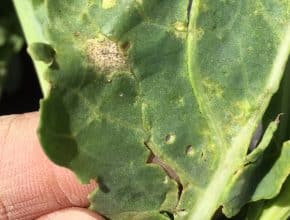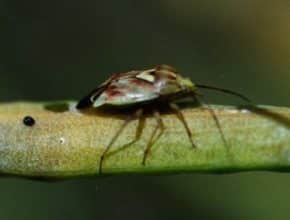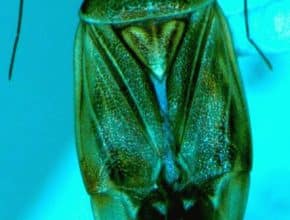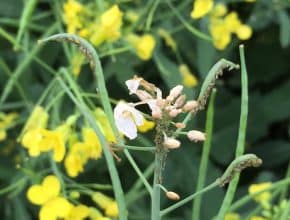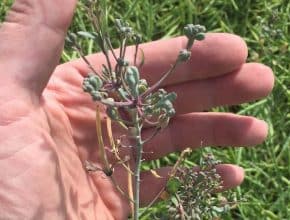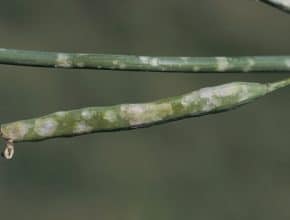Home / Canola Watch / July 20, 2016 - Issue 18
-
You may find quite menagerie of insects in your net after 10 sweeps. Can you correctly identify these five?…
-
Learn to tell the difference between common lesion-causing diseases — blackleg, sclerotinia stem rot and alternaria black spot…
-
Lygus have piercing, sucking mouth parts, which they use to pierce pods and drain immature seeds. This is where the major yield loss occurs from lygus…
-
Three main lygus species are pests of canola in Canada. Colour and shape are somewhat different, but each should be counted equally when sweep netting and making spray decisions. This one is the most common, L. lineolaris…
-
To answer the question, not likely. In most cases, only individual or small groups of plants are infested. The nominal threshold in canola is when 10-20% of plants have clusters…
-
Misshapen sack-shaped pods are often the result of aster yellows…
-
As canola starts to move from flowering and into pod formation, growers will often notice blanks up the raceme where pods did not form. Here are 7 possible reasons: Heat.……
-
With severe hail after flowering, plants can start to regrow, going through flowering stages again. This really sets back maturity, but with enough time, new branches can produce enough yield to make harvesting worthwhile. The question is, is this a crop worth much more investment?…
-
The spray-to-swath calculator helps growers and agronomists find a fungicide, insecticide or pre-harvest herbicide that fits the timeframe available…

